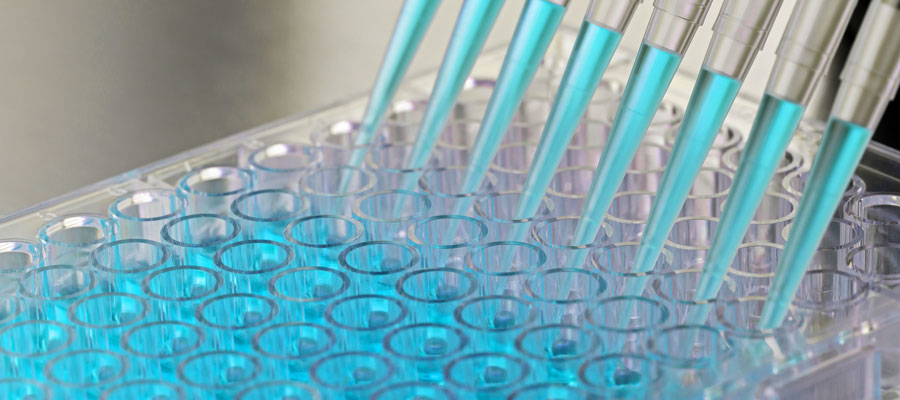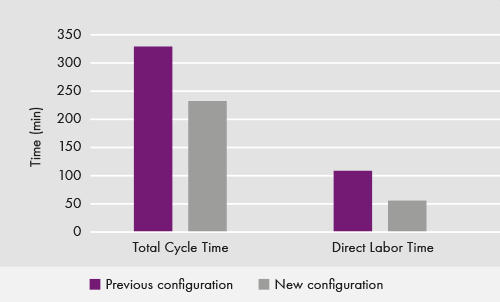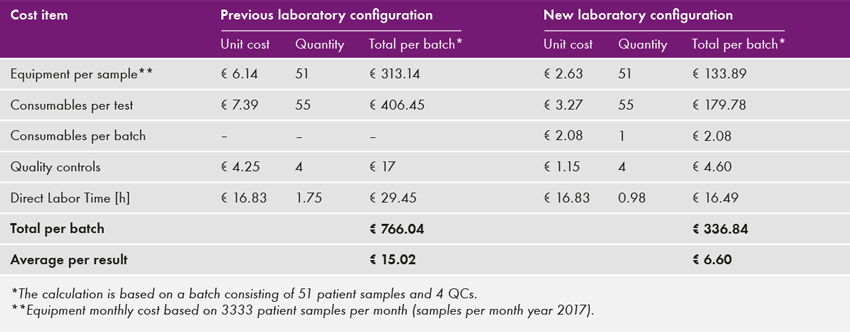Automation in clinical LC-MS/MS: saving time and resources
Liquid chromatography with tandem mass spectrometry (LC-MS/MS) has become a recognised technique in clinical diagnostics. With its high specificity and sensitivity, it is considered the gold standard quantification technique. While immunoassays have often been favoured because of lower resources and costs, a range of advancements have made LC-MS more appealing for the clinical laboratory. This includes the ability to automate the pre-analytical process, simplified sample preparation processes and multi-parameter assays.


A study, recently published by Settanni et al., aimed to find out whether switching to LC-MS is economically viable. The scientists compared an existing laboratory configuration for therapeutic drug monitoring (TDM) with a new setup that moved a number of analyses that were previously performed by HPLC and Immunoassays onto an LC-MS/MS system with automated pre-analytical processes. For example, the analysis of four immunosuppressants was moved from two LC-MS/MS and one immunoassay to a single commercial kit combined with an automated platform with random access. The lab “showed a reduction in the number of kits used, made possible by the availability on the market of new kits for wider multi-parametric analysis and sample preparations”, the authors wrote.
How was laboratory effectiveness measured?
The main question was whether the revised configuration also raised laboratory effectiveness. As a matter of quantification, the authors applied concepts from the manufacturing industry. Total value of ownership (TVO) strives to analyse and understand the true value of doing business while evaluating more than just direct costs. OEE (Overall Equipment Effectiveness) is a standard way of measuring productivity in manufacturing environments (see below for details).


Figure 1: Total cycle time and direct labor time for a standard batch consisting of 51 patient samples and 4 quality controls.
Total Value of Ownership (TVO)
There are a number of time-related factors that can be used in TVO analyses. One of the factors that the laboratory looked at was the total cycle time (TCT), the time taken from starting the sample preparation through to the final result. They found that the move from the old to the new configuration decreased the TCT for the immunosuppressants from 333 down to 235 min, saving 98 min. Furthermore, the direct labor time, the time a person is required to work during the analysis, also decreased from 105 down to 59 minutes (see Table 1). The saved time can be spent by laboratory personnel on other tasks. The major factor of the large time decrease was the automated sample preparation combined with kit consolidation, including one sample preparation procedure for all immunosuppressants.


Table 1: Comparison of Total Analysis Time (TAT) of ISD blood and AED analyses in first semester of 2017 and 2018.
Total Analysis Time (TAT)
Another factor the laboratory looked at was the Total Analysis Time (TAT), defined as “the interval between a specimen’s arrival in the laboratory and the time the result is issued”. It gives an indication as to whether the laboratory optimisation also leads to a faster submission of the result. The authors found a significant time reduction in all but one of the single TDM parameters (see Table 1).
How about the cost savings?
The authors now knew that the analysis was faster and required less time from personnel, but they didn’t stop there. They also looked at whether these improvements lead to an overall cost reduction and analysed the costs for a standard batch of 51 samples and 4 quality controls for immunosuppressant testing. By implementing automation, and reducing the methodology to LC-MS, the laboratory realised a 50% reduction in cost for immunosuppressant testing (see Table 2).


Table 2: Comparison of costs for immunosuppressants testing with the previous and new laboratory configurations.
LC-MS/MS – more accurate and more economic
The automation of TDM by LC-MS/MS is favourable for a number of reasons, but most notably a reduction in analysis times, resources, manpower and overall cost. The lab realised a cost reduction per test, while also bringing in a net gain in direct labor time. A single kit for all immunosuppressants provided a reduction in both costs and sample preparation time. Additionally, switching to multiparametric kits helped to reduce reagents, and the introduction of automation reduced the cost per test. In a webinar available here, the authors also showed data for steroid analysis with the MassChromTM kit which realised a 75% reduction of direct labor time.
In short: by bringing in automation, and by consolidating with multiparametric assays towards LC-MS/MS technology, the laboratory ultimately realised a faster turnaround time and a reduction in costs.
TVO and OEE
TVO (Total Value of Ownership) analysis is based on total cost of ownership (TCO). A TCO analysis includes total cost of instrument acquisition and operating costs, as well as costs related to replacement or upgrades at the end of the life cycle, thus, trying to give a picture of the profitability over time. Total value of ownership, however, does not focus solely on costs, but it also includes the benefits of an alternative investment. It is therefore a comparative measurement that evaluates the total costs of a service as well as any additional benefits such as the turnaround time.
OEE (Overall Equipment Effectiveness) is a standard in manufacturing for measuring productivity. It identifies the percentage of manufacturing time that is truly productive. An OEE score of 100% means you are manufacturing only Good Parts, as fast as possible, with no down time. In the language of OEE that means 100% quality (only good parts, performance (as fast as possible), and availability (no down time).
